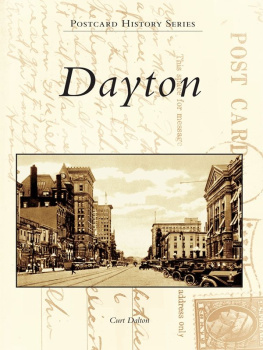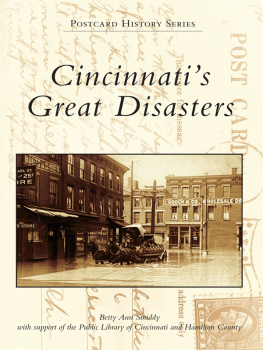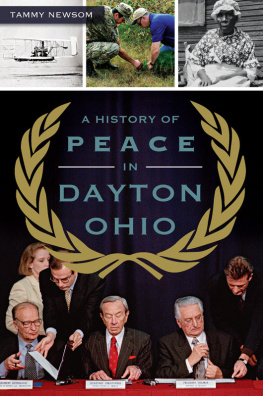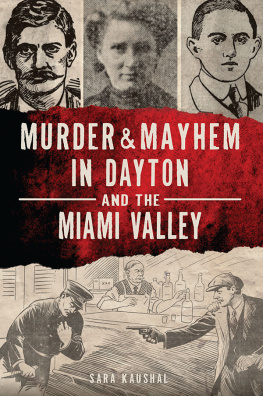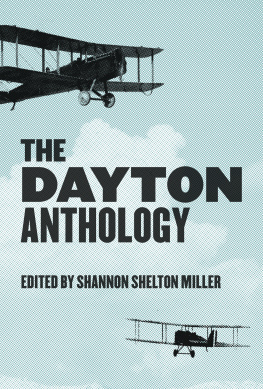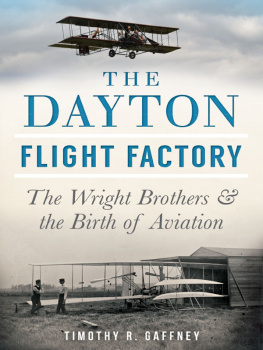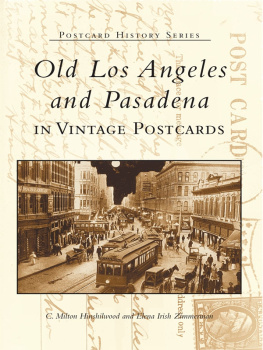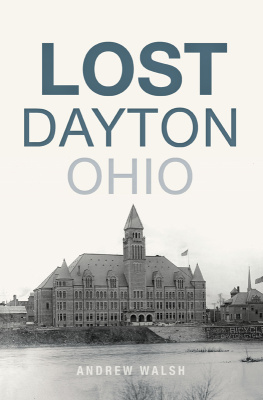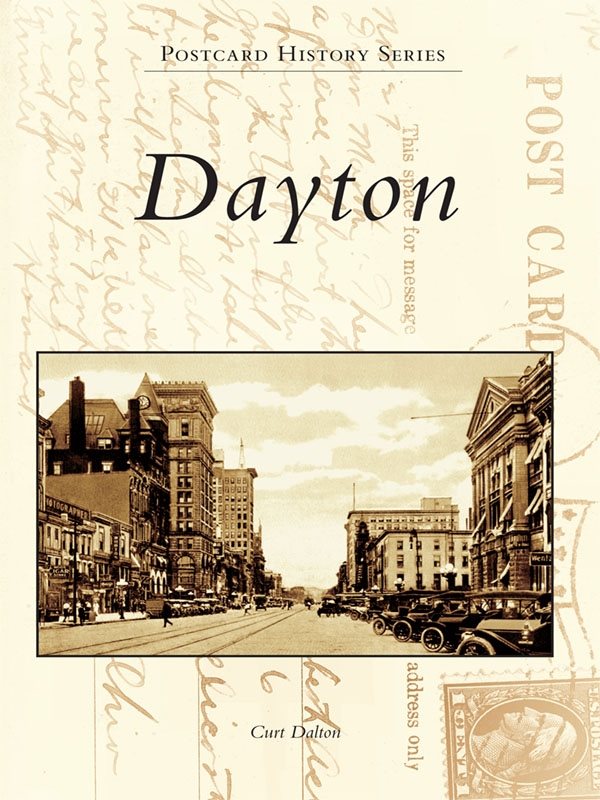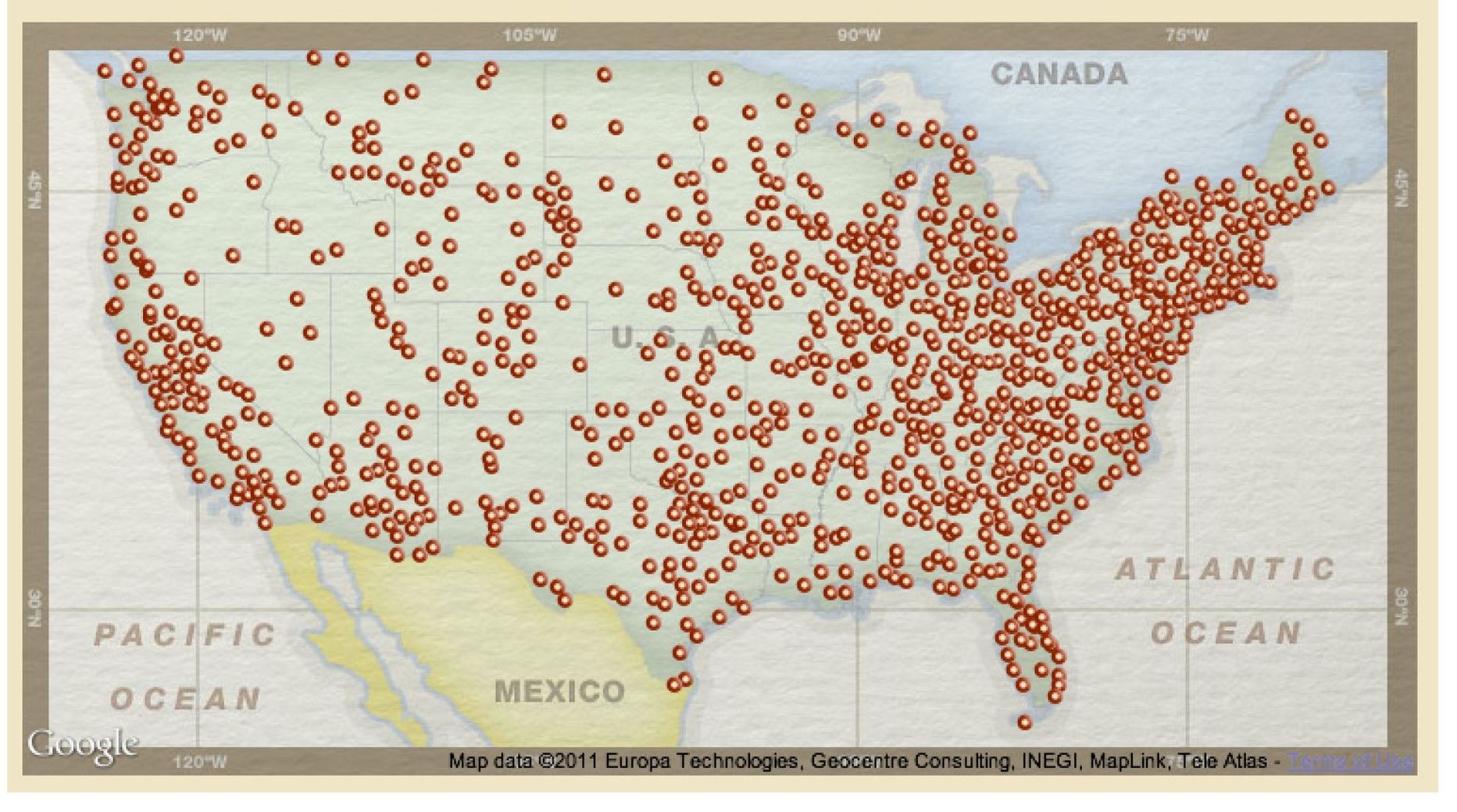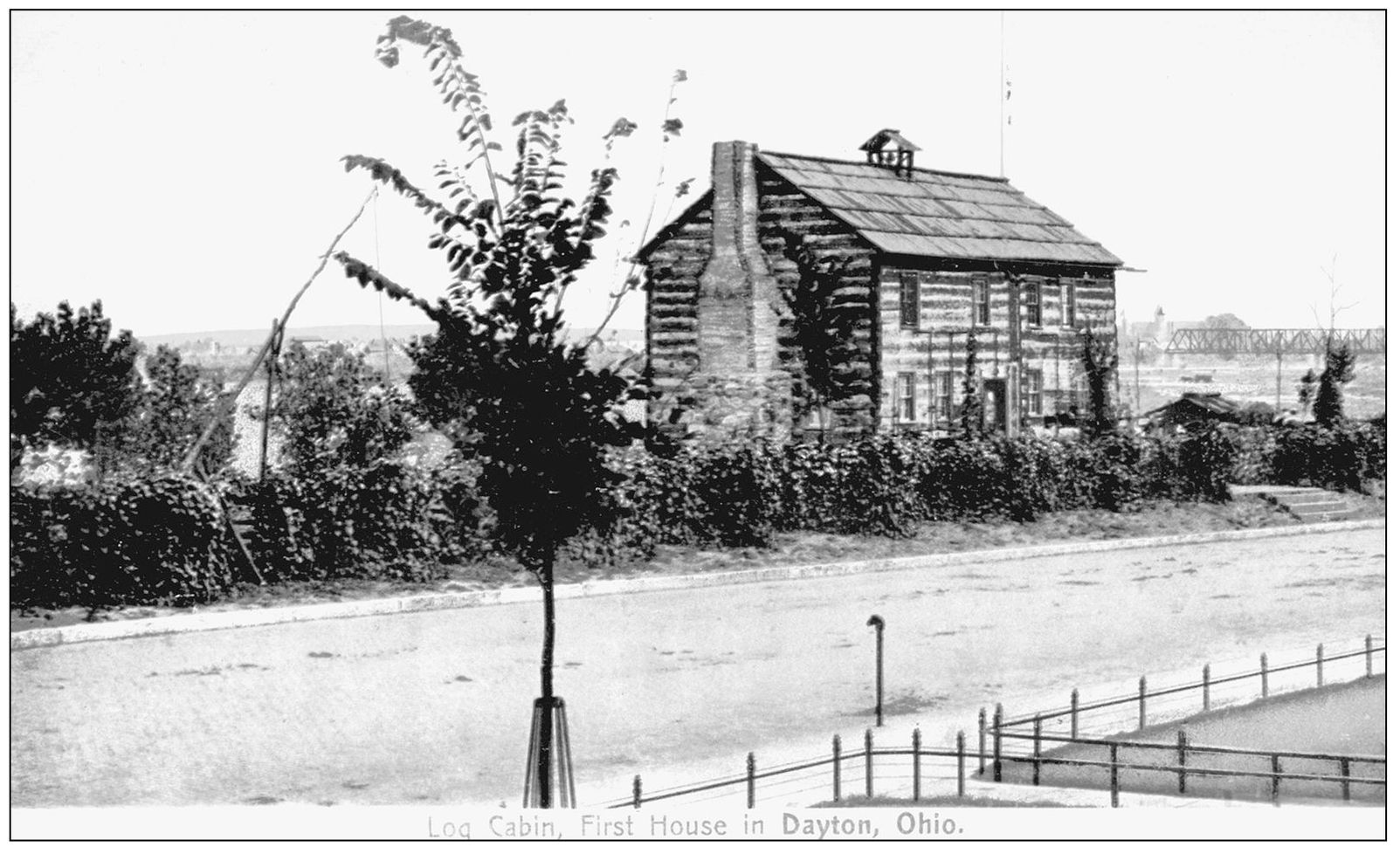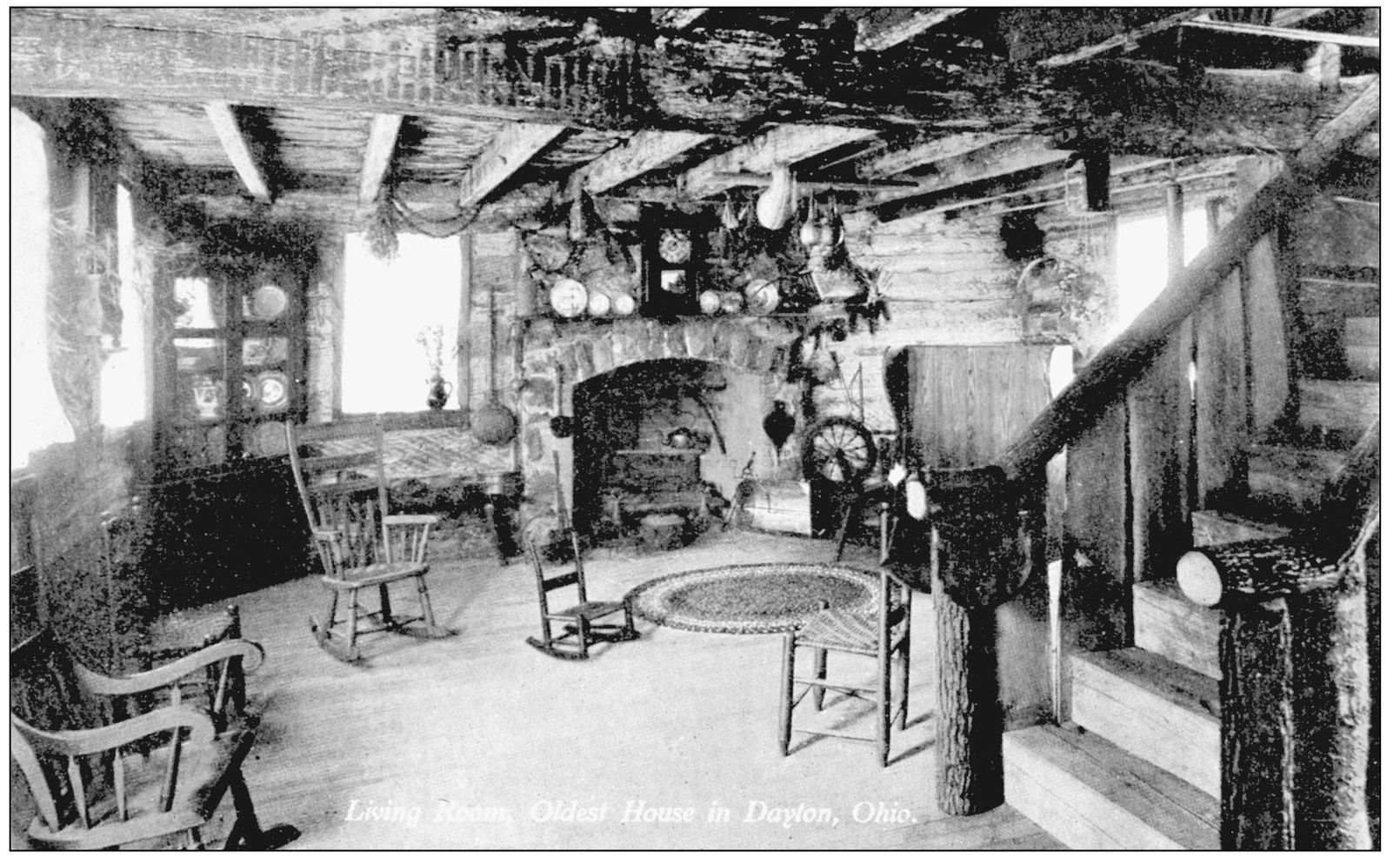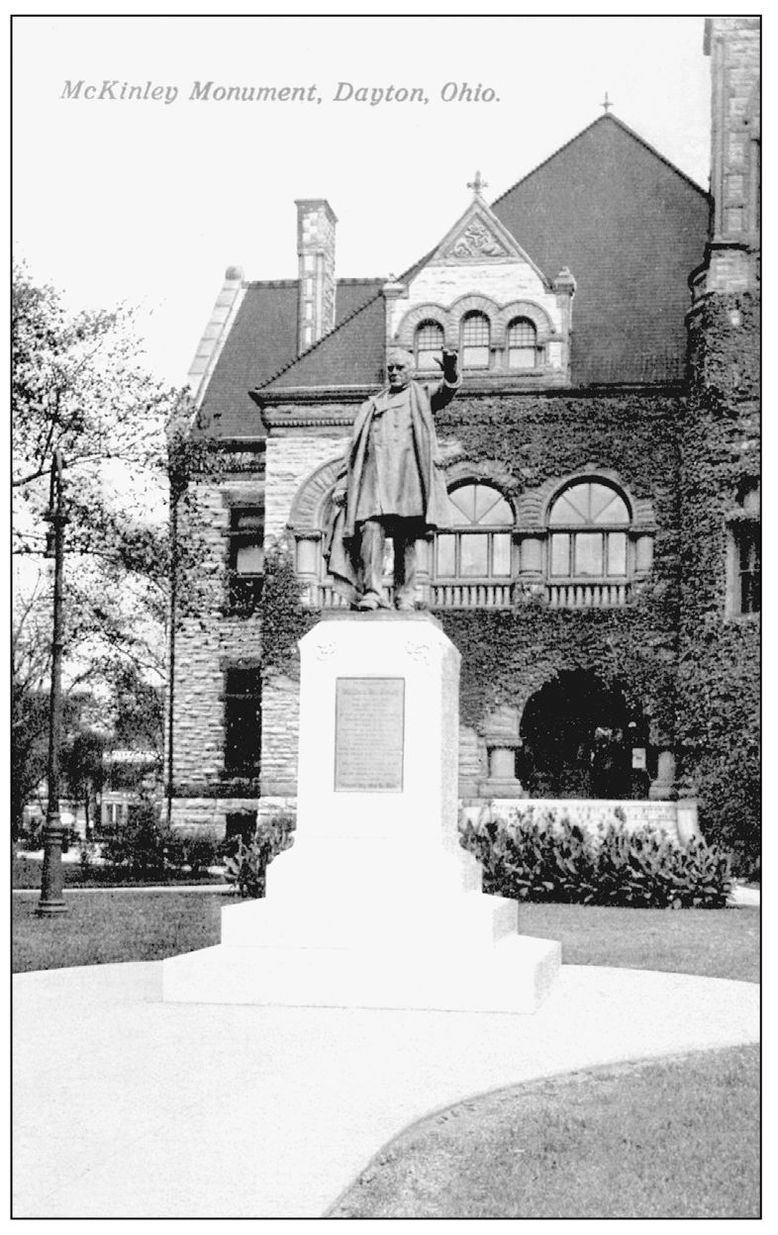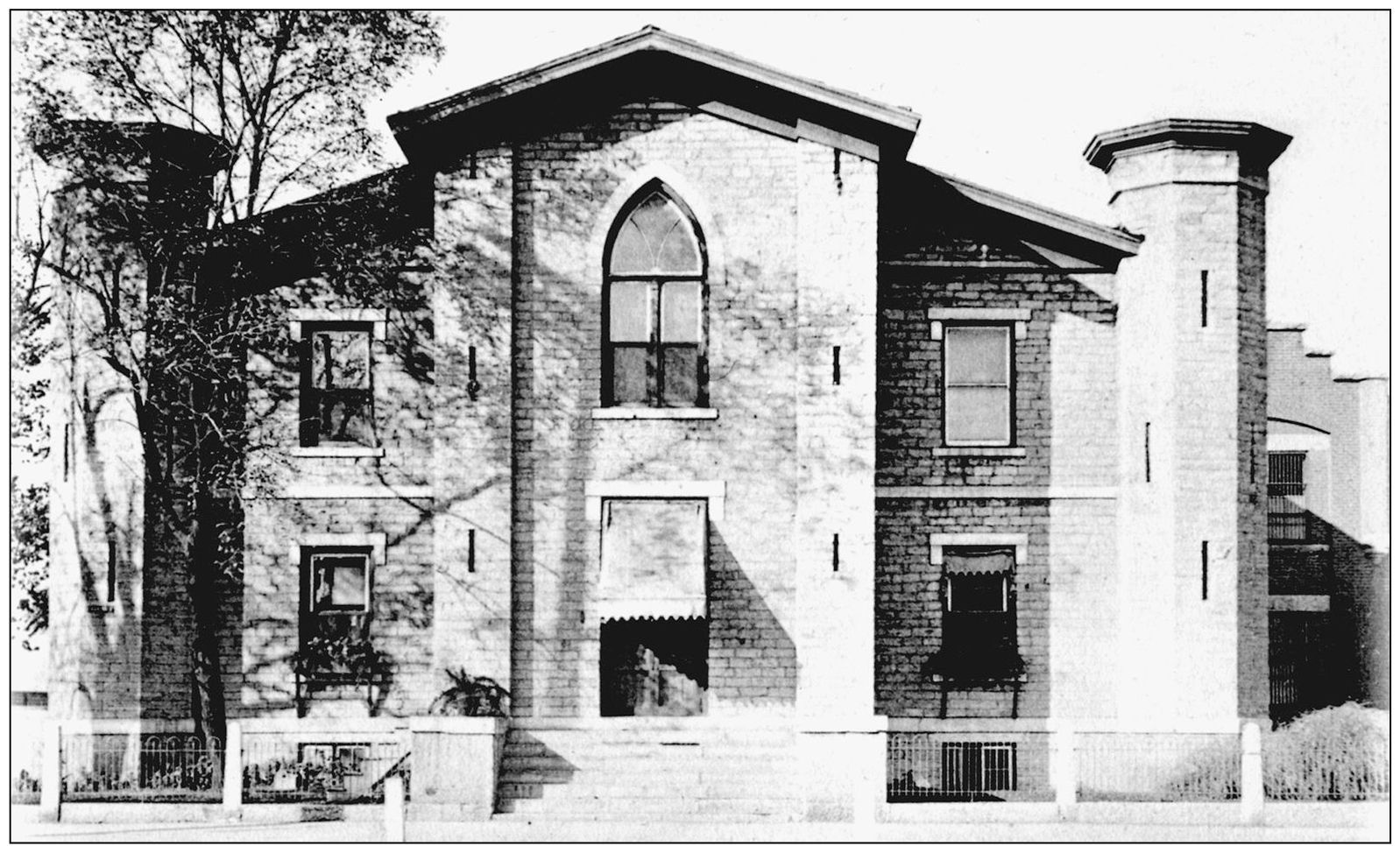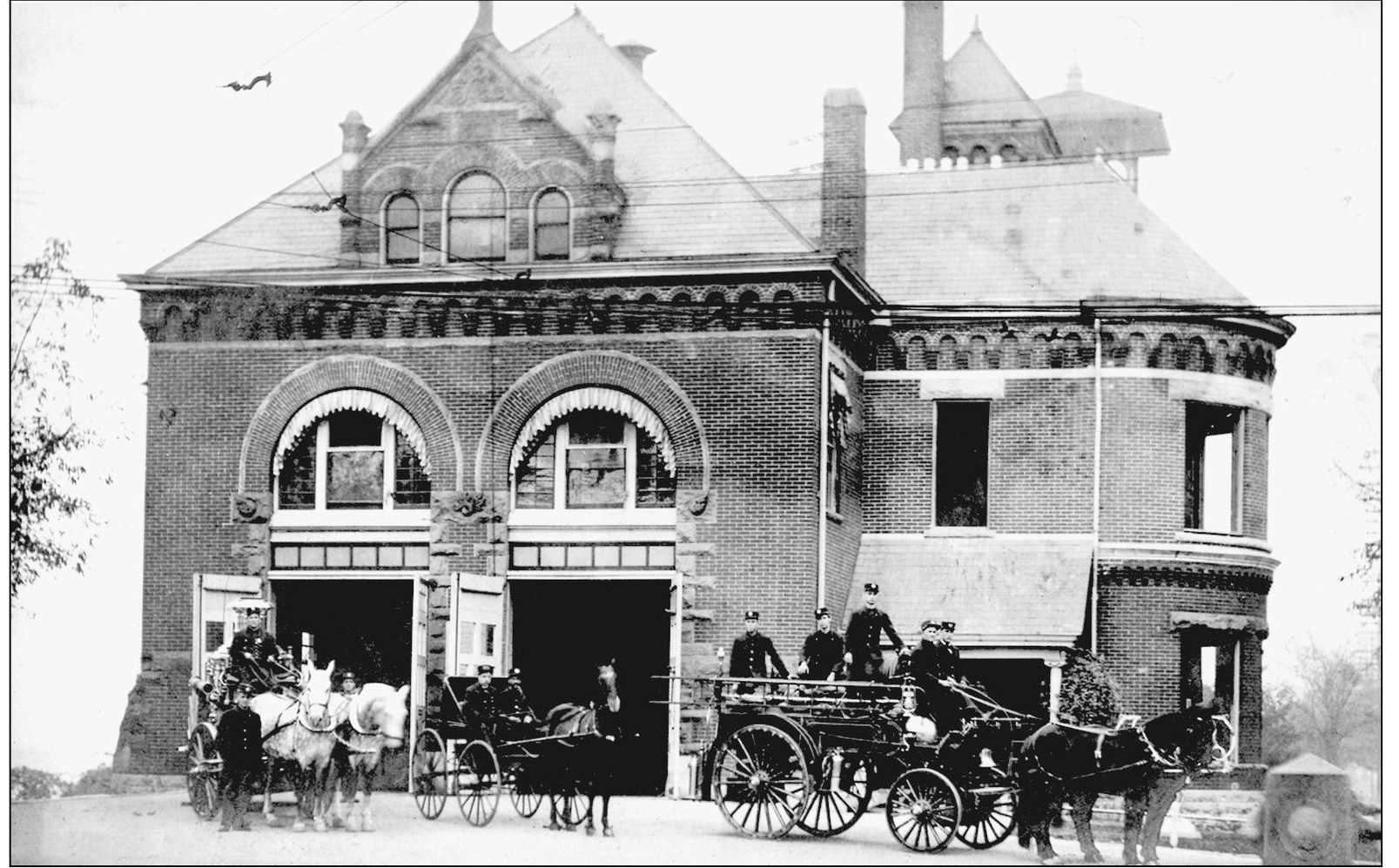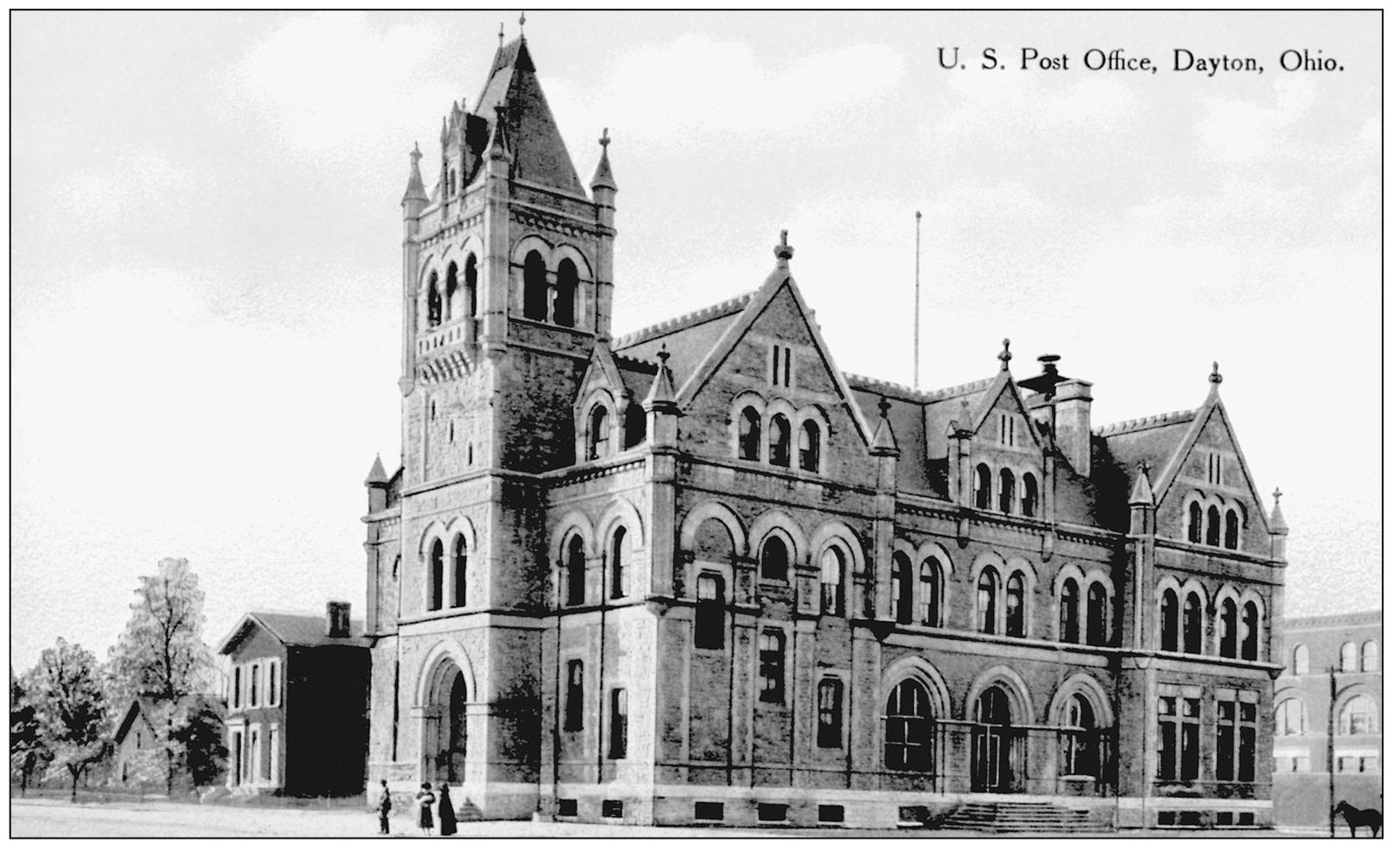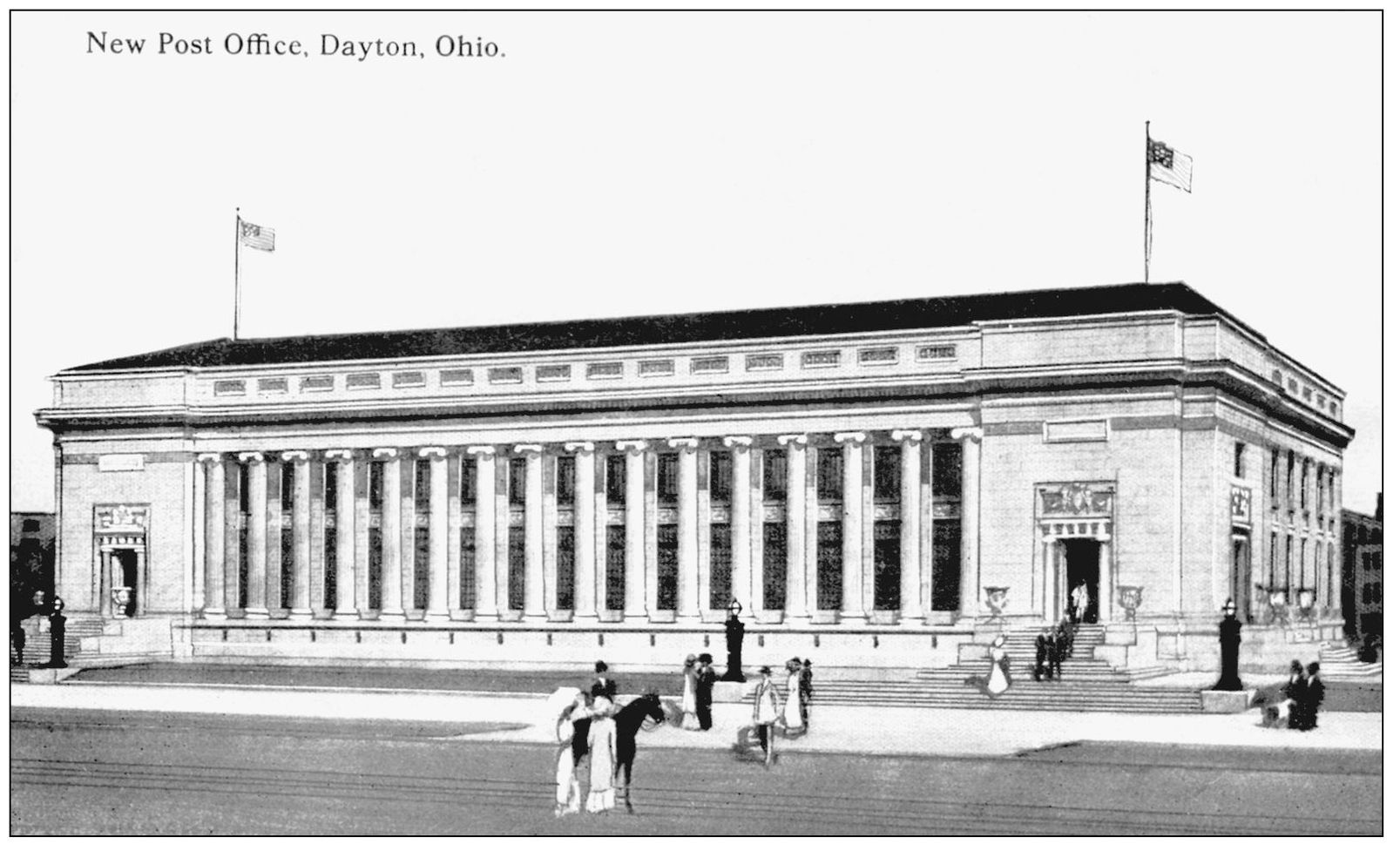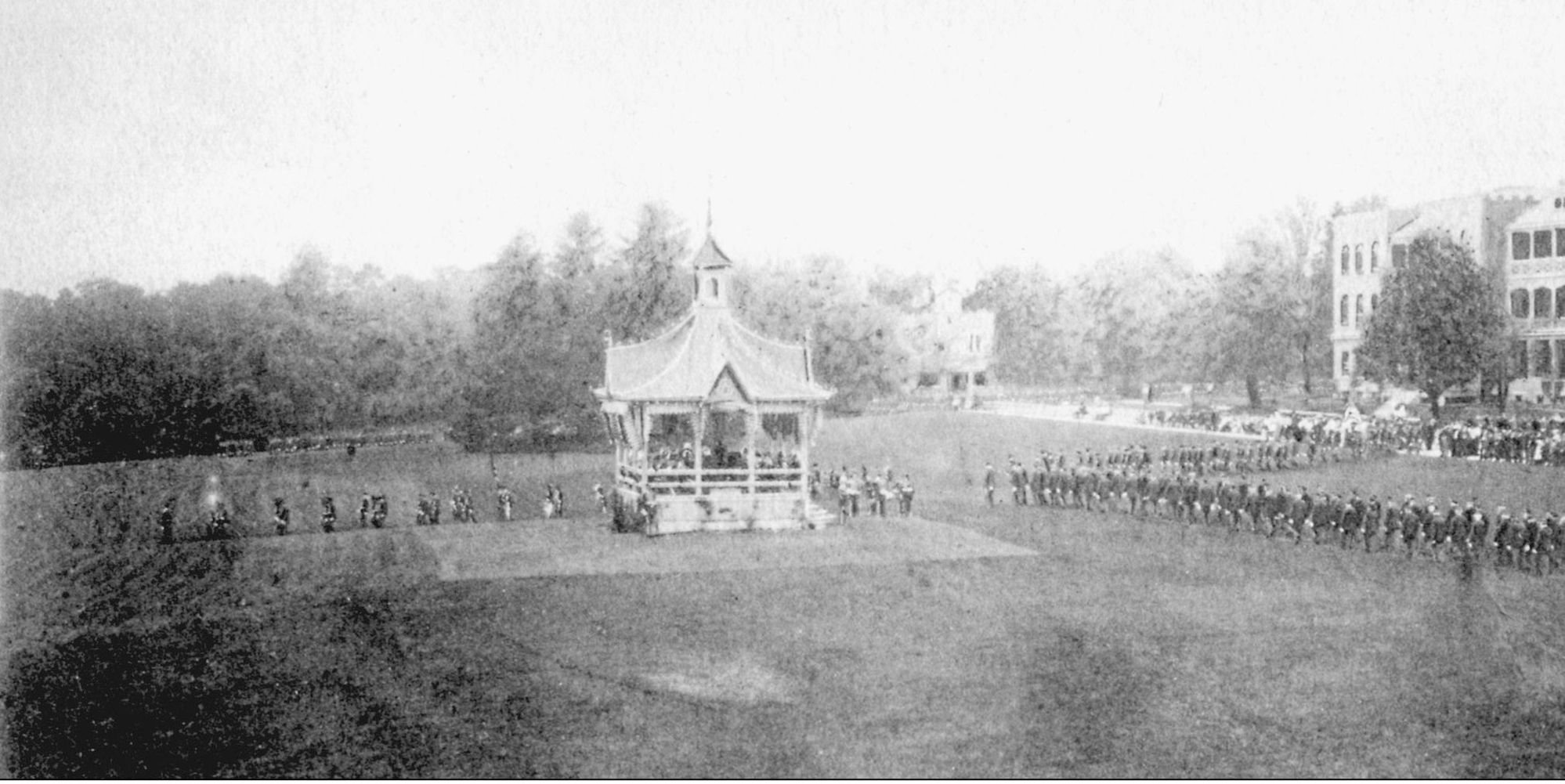One
GOVERNMENT FACILITIES
The old courthouse (left) was built in 1850. In 1859, Abraham Lincoln gave a campaign speech on its steps. The new courthouse (right) was built in 1881, then later torn down in 1972 to make room for Courthouse Square. The old courthouse still stands at the northwest corner of Third and Main Streets and is considered one of the finest examples of Greek Revival architecture in the United States.
Daytons oldest structure still standing was completed in 17981799 for Col. George Newcom. Originally located at the southwest corner of Main Street and Water Street, now Monument Avenue, the log cabin served as a courthouse, jail, store, and brewery. The building was moved to Van Cleve Park in 1896 during the citys centennial celebration and then moved again in 1963 to its present location at Carillon Park.
The interior of Newcoms log cabin, now known as Newcoms Tavern, is replete with items showing life in Dayton 200 years ago. Notice the long-handled metal pan hanging left of the fireplace. The pan held hot embers from the fireplace and was rubbed on icy sheets to warm the beds in winter.
In 1805, Dayton became the first city in Ohio to incorporate its public library. The public library building shown here was dedicated in 1888. Located at the northeast corner of Third and St. Clair Streets, the French Gothic Romanesque structure was built of Dayton limestone and trimmed in Marquette red sandstone. The building was demolished in 1962.
This monument shows Pres. William McKinley in a suit and long overcoat. Located in Cooper Park, the bronze sculpture was dedicated in 1910 to honor the Ohio-born president who was assassinated on September 6, 1901, by Leon F. Czolgosz at the Pan-American Exposition in Buffalo, New York. Over 11,000 children donated money to erect the $4,000 monument. The monument was moved to its present location after the new library was erected.
The City Work House, located on the corner of Sixth and Main Streets, was first used as a jail. When a larger jail was built in 1875, this building was converted to house adult criminals convicted of minor offenses. Sentenced to labor during their confinement, the men were compelled to break stone for the streets while serving out their time.
Fire Engine House No. 4 was located on the northeast corner of Main and Monument Streets. The firemen in this postcard dated 1908 proudly show off their firefighting equipment, including what appears to be a steam fire engine (left). Daytons first steam fire engine was bought in 1864, the same year the Dayton Fire Department was established. The fire station has since been razed.
In 1892, Dayton obtained its first Federal Building at the southwest corner of Fifth and Main Streets. Unfortunately, in less than a decade the city had outgrown the regal stone structure. Although an effort was made in Congress to raise money to expand the post office, it was finally decided that a newer building was needed. The old post office was sold to help raise money for the new building.
On January 1, 1915, the new Federal Building was dedicated at the southeast corner of Third and Wilkinson Streets. The granite structure includes a colonnade of 16 monolith columns. Reliefs of eagles, wreaths, and scrolls ordain the entrances while lion heads inspect those who pass by. Slated for demolition in 1975, the building was saved and made into private offices by the local architectural firm of Lorenz and Williams.
In March 1865, Pres. Abraham Lincoln signed a bill to provide care for Union volunteer soldiers who were disabled during service in the Civil War. Initially called the National Asylum for Disabled Volunteer Soldiers, the name was later changed to the National Home for Disabled Volunteer Soldiers. The first three homes were located in Togus, Maine; Milwaukee, Wisconsin;
The nickname Mother Branch was given to the Dayton Soldiers Home due to the personal care shown to its residents and to the visitors who came to tour the grounds. With its broad avenues, beautiful lakes, flower gardens, library, church, and other buildings, the home became so popular it attracted thousands of visitors annually, with groups hundreds of miles away taking

